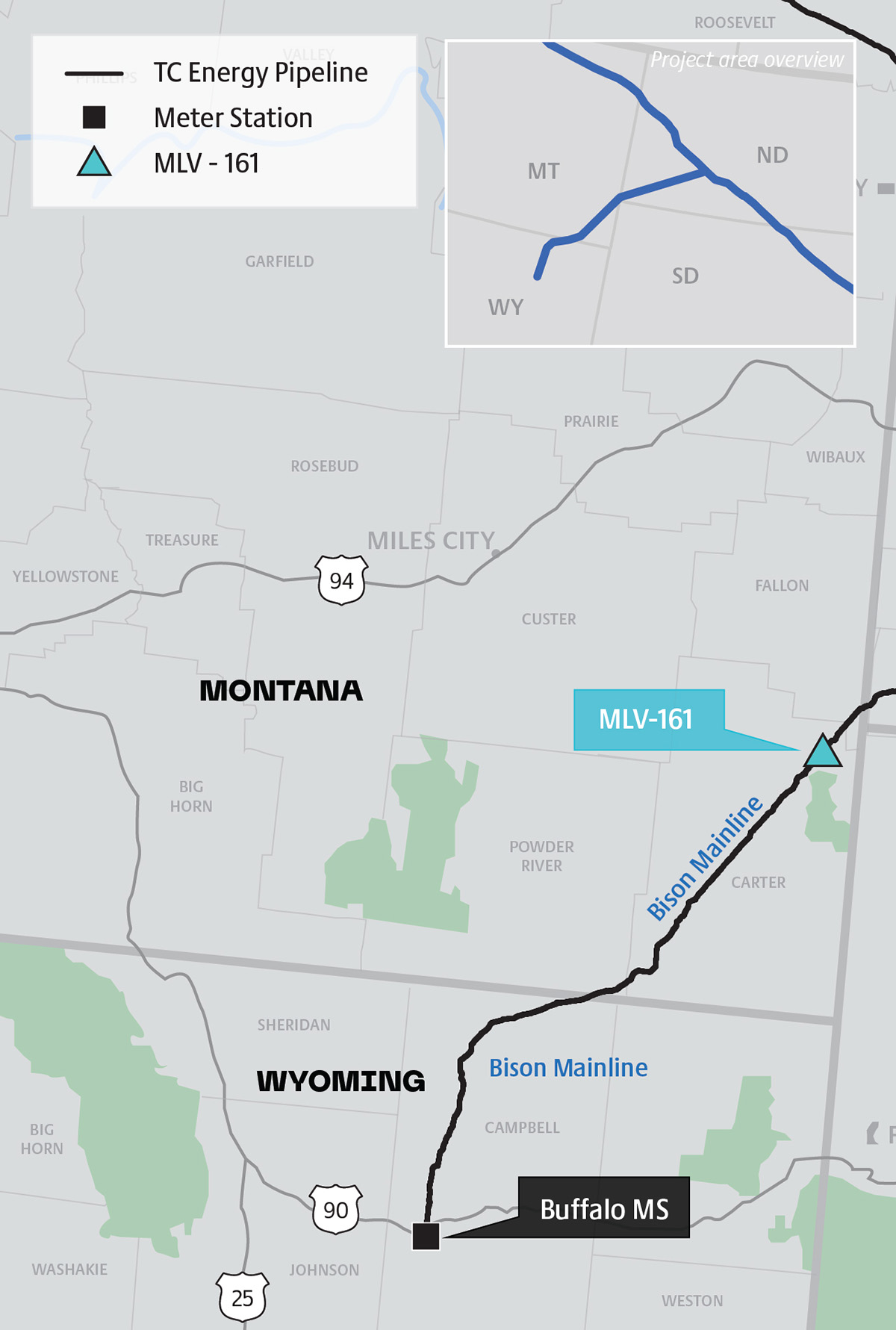August 2024, Vol. 251, No. 8
Features
Enbridge, Energy Transfer Confront Takeaway Capacity Crunch Amid Rising Production
[To explore the full digital edition, including the Page Raft version of this article, click here.]
By Richard Nemec, Contributing Editor, North America
(P&GJ) – In the months leading up to mid-year 2024, listening to seasoned oil and natural gas analysts and operators alike, it seems clear the consensus expectation is for growth in proven reserves and production and continued scrambling to have sufficient takeaway capacity to match that growth.
Calgary, Canada-based Enbridge CEO Greg Ebel underscored this in May, on a first quarter earnings conference call, in which he flagged half a dozen important oil and gas infrastructure projects underway at Enbridge during his current watch.
“We advanced our integrated U.S. Gulf Coast infrastructure strategy by sanctioning additional storage at our Ingleside crude oil export facility and acquiring two marine petroleum docks and nearby land,” Ebel noted in reporting record first quarter financial results. “These strategic investments augment our competitive position in the region and support attractive economics for our customers.”
During the first months of this year, Enbridge launched a binding open season on Gray Oak Pipeline for up to 120,000 bpd of expanded capacity and sanctioned 2.5 million barrels of additional storage at Enbridge Ingleside Energy Center for $100 million.
An agreement to acquire two marine petroleum docks and land from Flint Hills Resources, adjacent to the Ingleside Center’s terminal for $200 million, was included, as was an agreement to begin construction of U.S. Gulf Coast offshore pipelines, to service units of Shell and Equinor’s Sparta development, for another $200 million.
At the same time, respected analysts, such as RBN Energy Inc., focused on Dallas-based Energy Transfer (ET) as the midstream company that has done the most acquiring and which has continued a buying spree over the past five or six years. As part of a series of blogs in May and June, RBN cited multibillion-dollar acquisitions by ET, such as the $5 billion stock and cash purchase of SemGroup, allowing ET to obtain the sizable Houston Fuel Oil Terminal and 18 million barrels of storage capacity, five deepwater docks and seven large barges.
“The [2019] SemGroup Corp. acquisition also provided ET with crude-gathering assets in the Denver-Julesburg (DJ) Basin in Colorado and the Anadarko Basin in Oklahoma and Kansas, plus crude oil and natural gas liquids (NGL) pipelines from the DJ to the Anadarko,” according to RBN’s Kristen Hays, who thinks ET’s series of acquisitions has been “well thought out.”
More recent infrastructure additions have included the 2021 $7.2 billion acquisition of Enable Midstream, which Hays says further augmented the synergies ET had already achieved — particularly regarding NGL flows into its Mont Belvieu fractionation complex and its export facilities. This is in addition to flows of natural gas through Louisiana’s central gas corridor to LNG and industrial demand along the Gulf Coast, where ET has planned to develop the Lake Charles LNG facility, assuming recent challenges can be overcome.
In a separate May 27 pronouncement, RBN declared that the drivers for further infrastructure development in oil and gas are no longer clear and self-evident like in the past.
“There’s never been any reason to question the drivers for energy infrastructure development — until now,” RBN analysts opined this Spring. “Historically, the drivers were almost always ‘supply-push.’ The Shale Revolution brought on increasing production volumes that needed to be moved to market, and midstreamers — backed by producer commitments — responded with the infrastructure to make it happen. But now things seem to be different. U.S. energy infrastructure investment is soaring across crude oil, natural gas and NGL markets and, as in previous buildouts, midstreamers are bringing on new processing plants, pipelines, fractionators, storage facilities, export terminals and everything in between. We count nearly 70 projects in the works.”
Nevertheless, the U.S. Energy Information Administration's (EIA) latest natural gas production statistics released this Spring showed marked growth, but no projections for what this means for infrastructure growth. EIA reported that the average prices of both crude oil and natural gas in the United States were the highest since 2008; U.S. proved reserves of crude oil and natural gas hit record highs in 2022, the latest year for which EIA has complete data.
As of the end of 2022, U.S. crude oil and lease condensate proved reserves increased 9%, from 44.4 billion barrels to 48.3 billion barrels, while U.S. crude oil and lease condensate production increased 6%.
In Texas, which has more proved reserves of crude oil and lease condensate than any other state, increasing 9% (1.7 billion barrels), the largest net increase in any state; in New Mexico, crude oil and lease condensate proved reserves increased 26%, the second-largest net increase (1.3 billion barrels); and in North Dakota proved reserves increased 14%, the third-largest increase (600 million barrels).
Year-over-year, the average spot price on the first day of the month for West Texas Intermediate (WTI) crude oil at Cushing, Oklahoma, increased by 43%, from $66.26 billion in 2021 to $94.54 billion in 2022.

The prolific Permian Basin, of course, is the exception to this new non-supply-driven infrastructure rule. In early June, RBN addressed the exception by raving about the oil and gas supply growth driving infrastructure build-out in the west Texas/southeast New Mexico basin.
Permian producers need sufficient takeaway capacity to handle their rising volumes of crude oil and associated gas, and continued constraints are already here, according to RBN’s Taylor Noland, who notes a lot of industry anticipation for a major new pipeline, the 2.5 Bcf/d Matterhorn Express. It is due to come online later this year.
“Still more gas takeaway capacity will be needed to keep up with the Permian’s growth trajectory, and several projects are in the running to provide that,” Noland said. “In Corpus Christi Bay, the crude oil market is pulling as much volume as it can from the Permian via pipelines that are running nearly at capacity. The situation is complicated by the very real possibility that one or more offshore export facilities capable of fully loading very large crude carriers (VLCCs) may be built off the Texas coast. Most recently, in Houston, we looked at the latest Permian flows there and how they could change if a deepwater port is added nearby.”
Noland also focused on a new developing hub in the Permian designated as “Wink” — a new mecca for more takeaway infrastructure. Wink’s importance is centered on its role as a central point for the convergence of Permian oil. “Much like Cushing, Oklahoma — but admittedly on a much smaller scale — Wink got its start as an oil hub a century or so ago as a then-hotbed of crude oil production,” Noland said.
In July 1926, oil was discovered at the Hendrick oil field in Texas, just south of the southeast corner of New Mexico, near what is now called Wink, and by March 1929 — less than three years after “first oil” — the field was producing a then-astonishing 171,000 bpd, she said.
“Rudimentary pipeline and railroad infrastructure was built to help deal with the massive volumes,” noted Noland, a one-time oil marketing manager for Devon Energy. “The boom didn’t last; local production declined significantly over the ensuing decades and so did Wink’s population, which had peaked at about 6,000 in 1930. But Wink’s location — and its oil-related infrastructure, bare-boned as it may have been — made it a logical crossroads for crude oil making its way from the Permian to the Gulf Coast.”
Wink is a mix of inbound pipelines, storage terminals and outbound pipelines, and it boasts several short-run pipes enabling crude to flow between terminals. Wink includes at least nine terminals — three operated by Plains All American (Waimea, Wink South and Hendricks) and one operated each by Chevron (Delaware Crossing), Enbridge (Gray Oak), Marathon (Jackrabbit), Kinder Morgan (Wink Haley), ExxonMobil (Wink) and Energy Transfer (Panther Wink). Short-run pipelines allow the transfer of crude between terminals, and major long-haul pipelines exit many of the terminals, such as Gray Oak.
From a global perspective, the International Energy Agency (IEA) currently projects “a slightly slower rate of demand growth,” avoiding any projections of a peak or declining demand. IEA continues to see some growth in the future:
“Our projections assume major oil producers maintain their plans to build up capacity even as demand growth slows,” IEA notes. A resulting spare capacity cushion of at least 3.8 million bpd, concentrated in the Middle East, should ensure that world oil markets are adequately supplied throughout our forecast period. … Based on existing policy settings, growth in world oil demand is set to slow markedly during the 2022–28 forecast period as the energy transition advances.”
– International Energy Agency (IEA)
IEA puts a peak in oil demand “on the horizon,” as continued increases in petrochemical feedstock and air travel contribute to overall consumption continuing to grow throughout the forecast. It estimates that global oil demand will reach 105.7 MMbpd in 2028, up 5.9 MMbpd compared with 2022 levels. While a slight decline in the demand growth rate is projected, the bigger picture is that IEA also expects demand to reach 105.7 MMbpd in 2028, or 6% more than 2022.
Wall Street and other global investment centers have maintained a steady positive outlook toward oil and gas infrastructure projects. A Kansas-based investment consulting firm focused on essential assets, such as energy and power infrastructure, Tortoise Ecofin completed an outlook this year that found energy infrastructure continue to have stable cash flows, high barriers to entry, long-lived real assets and inelastic demand that provided double-digit returns in 2023.
“Energy infrastructure companies should continue to provide essential services for decades to come,” according to the 2024 Tortoise outlook for the sector.
It projects total returns in the 10%–14% range this year; oil and gas production volumes, reaching new record highs, an expansion of the United States leading role in energy exportation, and future oil and gas prices that promote economic growth.
Tortoise analysts like the expectations for the total return for the energy infrastructure sector, noting that they compare favorably to the average total return expected for the S&P 500 by the major Wall Street banks.
In fact, from Dec. 31, 2020, to Dec. 31, 2023, the energy infrastructure sector, as represented by the North American-focused Alerian Midstream Energy Index, delivered a 25% annualized return compared to 10% for the S&P 500 Index, noting “The 2024 total return expectation would extend this streak of good absolute and relative returns.”
The Alerian Index is a broad-based composite of North American energy infrastructure companies. The capped, float-adjusted, capitalization-weighted index — whose constituents earn most of their cash flow from midstream activities involving energy commodities — is disseminated real-time on a price return basis (AMNA) and on a total-return basis (AMNAX).
The reasons for the energy infrastructure sector outperforming others include the fundamental shift in capital allocation by energy company management teams.
“In 2021, most energy infrastructure companies pivoted their focus to free cash flow generation, after more than a decade of focus on growth,” Tortoise said. “Investors have rewarded the sector for this, and we expect this discipline to carry-over [in] 2024.”
In the Williston Basin with the prolific Bakken Shale play, North Dakota Pipeline Authority Director Justin Kringstad turned around a reporter’s question on reserves, preferring to look at production versus takeaway capacity in his state.
“I am going to reshape the question into a comparison of production forecasts and takeaway options,” Kringstad offered last May. “If the Dakota Access [oil] Pipeline is allowed to remain in service after the environmental impact statement [EIS] process is complete, North Dakota will continue to have adequate crude oil transportation for the foreseeable future. If Dakota Access is forced to shut permanently or temporarily, North Dakota will have inadequate egress options for Bakken crude oil.”
Kringstad says current and publicly announced natural gas processing facilities in North Dakota will be sufficient in the near term. State pipeline authority forecasts suggest additional gas processing will be needed by 2026–27 to support growing production and gas capture goals, he noted.
Longer term, the development of more gas storage in the state will become a reality, he thinks, as North Dakota attempts to use more of the Bakken’s associated gas supplies to produce electricity and pursue enhanced oil recovery (EOR).
NGL egress capacity will be sufficient in the near term, too, with the announced expansion of ONEOK’s Elk Creek Pipeline to be complete early in 2025.
“Beyond 2026, North Dakota will be increasingly reliant on NGL movements by rail until additional expansion projects are developed,” Kringstad said. Current residue natural gas egress is sufficient with continued displacement of Canadian gas on the Northern Border Pipeline.
“Forecasts suggest residue gas congestion in the 2025-time frame until the Bison Pipeline reversal is complete in 2026,” Kringstad said. “Beyond 2026, forecasting suggests additional residue solutions will be needed to support growing production levels and gas capture goals.”
In mid-2024, the unknown factor regarding current projections is the ultimate result of the November U.S. elections. They could ultimately “decelerate” the ongoing energy transition, putting what consultants at Wood Mackenzie (WoodMac) estimate as $1 trillion in energy investment into question. WoodMac issued a new Horizons report last May with words of caution.
A victory for former President Donald Trump in the November 2024 election — combined with long-standing issues around the U.S.’s relationship with China and U.S. government deficits — could significantly alter the path of U.S. energy policy and usher in a delayed transition scenario, according to WoodMac’s report.
“While investments for technologies that support the energy transition and low carbon technology may decelerate, the opposite effect might take place for fossil fuels, which could see expanded investment and push out peak fossil fuel demand,” according to the report, Hitting the Brakes: How the Energy Transition Could Decelerate in the U.S.
“This election cycle will really influence the pace of energy investment, both in the next five years and through 2050,” Brown noted, projecting that the multi-billion-dollar Inflation Reduction Act could be repealed following a Trump victory in November. “A second Trump presidency would likely issue executive orders that would abandon the 2035 net zero target for the power sector, establish softer emissions goals from the EPA, and issue tax credit regulations that could favor blue hydrogen [derived from natural gas and including carbon capture].”
Richard Nemec is a long-standing contributing editor based in Los Angeles. He can be reached at rnemec@ca.rr.com









Comments